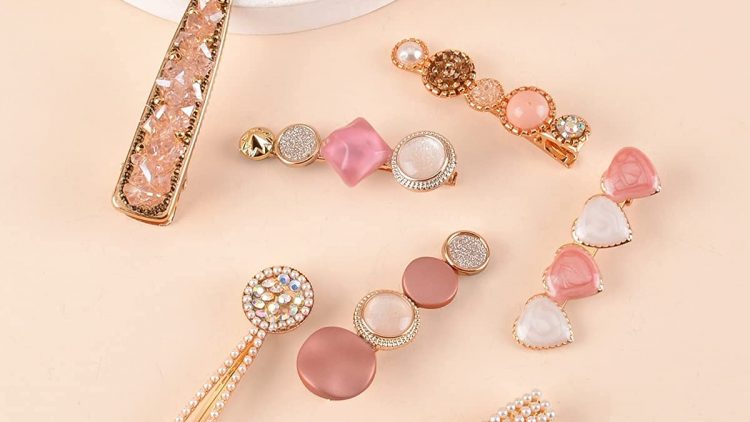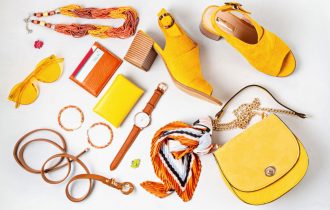The Rise of Sustainable Materials in the Accessory Industry
With a growing awareness of environmental issues, the fashion industry is undergoing a significant transformation towards sustainability. The accessory industry, in particular, is embracing eco-friendly practices and moving away from traditional materials with high environmental impacts. As consumers become more conscious of their purchasing choices, sustainable materials are gaining popularity for their positive impact on the planet and society. In this article, we explore the rise of sustainable materials in the accessory industry, understanding their benefits, innovations, and the positive change they bring to the fashion world.
The Urgency of Sustainability in Fashion:
The fashion industry has long been associated with negative environmental impacts, including water pollution, waste generation, and resource depletion. Traditional materials like leather, precious metals, and synthetic fabrics contribute to these issues, leading to a pressing need for more sustainable alternatives. The demand for sustainable fashion is driven by consumers’ desire to make ethical choices, support eco-conscious brands, and minimize their environmental footprint.
Natural Fibers and Plant-Based Materials:
Natural fibers, derived from plants and organic sources, are at the forefront of sustainable materials in accessories. Cotton, bamboo, hemp, and linen are popular choices for producing eco-friendly textiles. These materials are biodegradable, renewable, and require fewer resources to grow, making them an eco-conscious alternative to conventional textiles.
Bamboo, in particular, has gained popularity for its rapid growth and low environmental impact. It is used to create accessories such as sunglasses frames, watches, and even phone cases. Bamboo’s natural aesthetic and strength make it a versatile and sustainable choice.
The Revival of Recycled Materials:
Recycling and upcycling have become significant trends in the accessory industry. Brands are reimagining waste materials and turning them into stylish and functional accessories. Recycled plastics, such as PET bottles and ocean plastics, are being used to create innovative designs, including handbags, jewelry, and sunglasses frames.
Recycled metals, such as reclaimed silver and gold, are finding their way into the production of ethical and sustainable jewelry. By giving discarded materials a new life, brands are not only reducing waste but also showcasing the beauty of recycled fashion.
Piñatex and Mushroom Leather: Sustainable Alternatives to Leather
Leather production is a resource-intensive process that contributes to deforestation and greenhouse gas emissions. As a result, eco-conscious designers are seeking ethical alternatives. Piñatex, made from pineapple leaf fibers, is a cruelty-free and sustainable material that resembles the texture of leather. It is used to create bags, shoes, and other accessories, offering a viable and eco-friendly alternative.
Mushroom leather, also known as mycelium leather, is another innovative and sustainable material. It is made from the root system of fungi and can be crafted into various accessories, including handbags and wallets. Mushroom leather is biodegradable, lightweight, and requires minimal resources to produce, making it a promising alternative to traditional leather.
Lab-Grown Diamonds and Ethical Gemstones:
The demand for ethically sourced gemstones and diamonds is on the rise. Lab-grown diamonds, created through a sustainable process that replicates the conditions found in nature, offer a conflict-free and environmentally friendly alternative to mined diamonds. These diamonds are chemically identical to natural diamonds and are free from human rights concerns associated with traditional diamond mining.
Ethical gemstones, which are responsibly sourced and mined under fair labor practices, are also gaining popularity. Brands that prioritize ethical gemstones offer consumers a transparent and socially responsible choice for their jewelry.
Beyond Materials: Ethical Production and Fair Trade Practices
Sustainability in the accessory industry goes beyond choosing eco-friendly materials. Ethical production practices and fair trade partnerships with artisans and communities play a vital role in creating sustainable accessories. Brands that prioritize fair wages, safe working conditions, and social responsibility support the well-being of workers and contribute to positive change in the fashion industry.
Consumer Empowerment and the Future of Sustainable Accessories:
As consumers become more conscious of the environmental and social impact of their fashion choices, their demand for sustainable accessories continues to grow. Brands that embrace sustainable materials and practices are rewarded with customer loyalty and support. Additionally, advancements in technology and innovative materials are paving the way for even more sustainable alternatives in the future.
The rise of sustainable materials in the accessory industry marks a crucial shift towards a more ethical and eco-conscious fashion world. From natural fibers and recycled materials to lab-grown diamonds and alternative leather, sustainable materials are revolutionizing the way we approach fashion accessories. By supporting brands that prioritize sustainability and ethical practices, consumers have the power to drive positive change and create a fashion industry that is more in harmony with the planet and its people. As we embrace sustainable accessories, we contribute to a brighter and more sustainable future for the fashion industry and the world at large.










